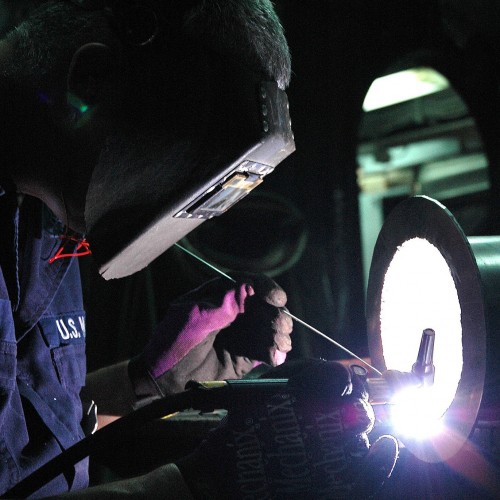
Posted on May-05-2020
Energy beam welding otherwise referred to as electron-beam welding, is a fusion welding process. The method involves a beam of high-velocity electrons that are applied to two materials that are being joined together. The pieces melt and fuse together as the kinetic energy of the electrons is transformed into heat upon impact.
EBW is a relatively new welding process and has become popular in high production applications. It is often performed under vacuum conditions which helps to prevent dissipation of the electron beam.
Conduction electrodes are not bound by a nucleus of atoms. They move in a crystal lattice of metals with velocities, depending on the temperature. They cannot leave the metal unless their kinetic energy is higher than the potential barrier on the metal surface.
For the source of conduction electrons, the materials used must fulfil set criteria: able to achieve high power density in the beam; keep evaporation in the vacuum low; and, the emitter must be mechanically stable to gases present in the vacuum atmosphere, such as oxygen and water vapour.
These electrons possess low energy so in order to give them the required high speed they are accelerated by a strong electric field. This forms a narrow converging ‘bundle’ close to the anode.
The next stage is making sure that the divergent electron beam is focused as it does not have a power density sufficient for welding the metals. In order to achieve this, a magnetic field needs to be produced by using an electric current in a cylindrical coil. This results in a trajectory of electrons in a magnetic curve lens, meaning that the beam spot can be applied precisely with respect to the joint being welded.
When it comes to the effectiveness of energy beam welding it is dependent on a few key factors. The first and most important factor is the physical properties of the material to be welded. Especially the ease with which that material can be melted or vapourised under low-pressure conditions.
The loss of material by evaporation is usually so small and not worth worrying about for most metals which is favourable for welding and easily achieved with low values of surface power density. However, energy beam welding can be intense on materials and cause evaporation or boiling during the process. At a high powered density, the material affected can completely evaporate in a very quick amount of time. If this happens then it is no longer electron beam welding, but instead, it becomes electron beam machining.
If you’re interested in the purchase or hire of welding machinery, equipment and supplies, please don’t hesitate to get in contact with our team by calling 01213 272 249, alternatively, you can fill out our online enquiry form, and we will be in touch with you.